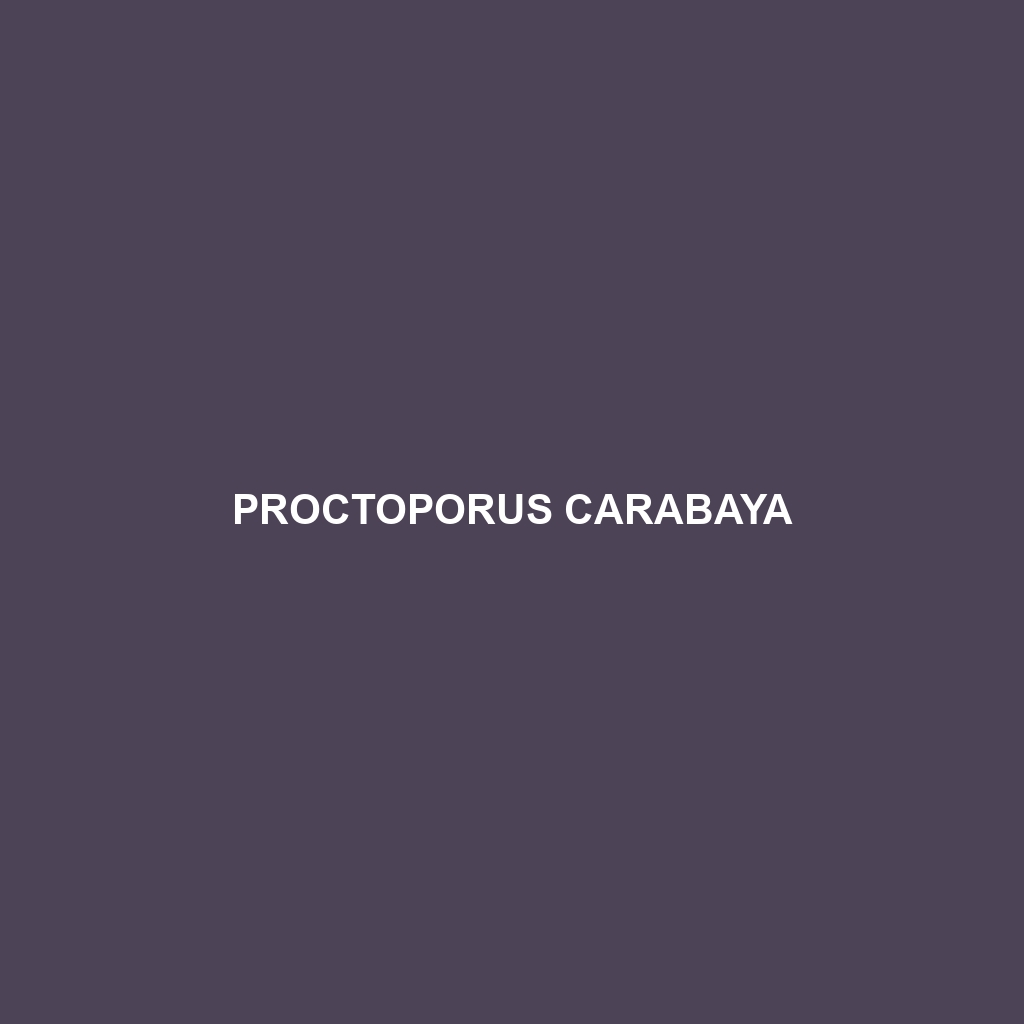Common Name
Proctoporus carabaya
Scientific Name
Proctoporus carabaya
Habitat
Proctoporus carabaya is primarily found in the rugged terrains of the Andean mountains, predominantly within the country of Peru. This species thrives at different altitudinal ranges, ranging from approximately 2,000 to 4,000 meters above sea level, where the climate is characterized by cool temperatures and significant moisture. The predominant habitat consists of temperate forests that are rich in biodiversity, often intermixed with patches of shrubland and rocky outcrops. Proctoporus carabaya is well adapted to these environmental conditions, utilizing crevices and underbrush as shelter. This species is not only found in woodlands but also enjoys proximity to streams and rivers, favoring humid microhabitats that support its unique needs.
Physical Characteristics
Proctoporus carabaya exhibits a slender, elongated body, reaching an average length of about 25 to 30 centimeters. One distinctive feature of this species is its smooth, shiny scales that vary in color from shades of brown to lighter tan, providing effective camouflage against the rocky and leaf-littered surfaces of its habitat. The dorsal side is typically more patterned, enhancing its ability to blend into the natural environment. The limbs are well-developed, enabling agile movement across the rocky terrains, while their long, whip-like tails assist in balance, particularly during arboreal behavior. Furthermore, the large, prominent eyes allow for improved vision during the low light conditions often present in their forested environments.
Behavior
The behavior of Proctoporus carabaya is predominantly terrestrial, though they are not averse to climbing in search of food or shelter. This species is primarily diurnal, foraging during daylight hours, but has been observed exhibiting nocturnal habits, particularly in response to environmental stressors. Social interactions among individuals are typically minimal, as they are solitary creatures, although they may display territorial behaviors during the breeding season. Mating rituals include elaborate courtship displays, wherein males engage in vibrant displays of movement and color to attract females, highlighting their fitness level through this visual cue.
Diet
Proctoporus carabaya is known to be primarily insectivorous, preying upon a variety of arthropods that inhabit its mountainous ecosystem. This includes beetles, ants, and other insects, which provide essential protein for growth and reproduction. While predominantly insectivorous, there are instances where this species has been documented consuming small invertebrates, indicating some degree of opportunistic feeding behavior. Their feeding patterns suggest they tend to hunt during the warmest parts of the day when insects are most active, organizing their feeding behavior around peak insect activity.
Reproduction
The reproductive cycle of Proctoporus carabaya is characterized by an annual breeding season that typically occurs during the wetter months, coinciding with increased food availability and optimal climatic conditions. After successful mating, females undergo a gestation period lasting approximately 60 to 70 days before giving birth to a litter of about two to five live young. The offspring are born fully developed and are independent shortly after birth, which is crucial for survival in their rugged environment. Parental care is minimal, as the female protects her young only until they are capable of self-sustenance, illustrating the survival strategies necessary in their challenging habitat.
Conservation Status
Currently, Proctoporus carabaya is listed as least concern by the International Union for Conservation of Nature (IUCN). However, its habitat is threatened by both agricultural expansion and climate change, which may pose future risks to its populations. Conservation efforts are underway to monitor their populations and habitat conditions, but challenges persist due to the limited geographical range and ecological specificity of this species. Ongoing habitat destruction, coupled with illegal collection for the pet trade, underscores the importance of awareness and conservation measures to protect the delicate ecosystems in which this species resides.
Interesting Facts
Proctoporus carabaya possesses one unique adaptation that sets it apart from similar species: its ability to alter its coloration slightly depending on environmental conditions. This adaptation not only aids in camouflage but may also play a role in thermoregulation. Furthermore, this species is known for its agile movements, capable of rapid escapes when threatened, showcasing its evolutionary adaptations that enhance its survival within competitive niches.
Role in Ecosystem
Within its ecosystem, Proctoporus carabaya plays a vital role as both a predator and prey. By controlling insect populations, this species contributes significantly to maintaining the balance within its food web. Their presence is also essential for the foraging habits of larger predators, thus integrating them into the larger ecological framework. As a potential seed disperser through its feeding habits, Proctoporus carabaya may aid in forest regeneration processes, enhancing the overall health and sustainability of its mountainous habitat.
